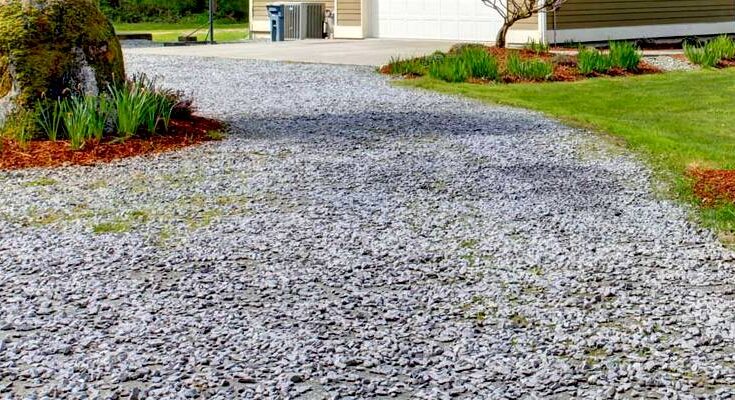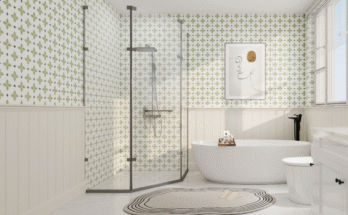Introduction
In addition to being a useful means to control vehicle access, a gravel driveway may also be a visually pleasing addition that improves the overall look of your house. Gravel driveways are long-lasting, low-maintenance, and have a rustic appeal that goes well with many types of architecture when they are placed properly. This book will explain the advantages of having a gravel driveway, give installation assistance, and provide maintenance ideas to make sure your driveway lasts for many years.
Benefits of a Gravel Driveway
A Driveway gravel near me is a popular option among homeowners due to its many benefits. First off, there is very little wear and tear on gravel roads, even under heavy traffic. Gravel is easily replenishable, unlike asphalt or concrete, which over time makes it a more affordable alternative. Additionally, gravel has good drainage, which lessens the possibility of erosion and puddles. Gravel driveways are also highly customizable; you may match the beauty of your property with a variety of gravel hues and sizes.
Moreover, compared to other paving materials, gravel driveway installation is very simple and quick. They can reduce installation expenses since they require less equipment and tools. An additional advantage is the minimal upkeep needed. Compared to asphalt or concrete driveways, gravel driveways are less likely to fracture and sustain damage, however, regular maintenance is still required. gravel driveway installation and upkeep may improve the usability and curb appeal of your home.
Types of Gravel for Driveways
Choosing the right type of gravel is crucial for ensuring your driveway’s durability and visual appeal. Here are some common types of gravel used for driveways:
- Crushed Stone: Because of its clean look and long-lasting nature, crushed stone, which is created by breaking up big stones into tiny pieces, is a popular option. You may choose the size that best fits your needs because it comes in a variety of sizes.
- Pea gravel: These tiny, smooth stones are prized for their cozy walking surface and ornamental look. Pea gravel may need to be refilled more frequently, but it is perfect for driveways where aesthetics are important.
- River Rock: River rock has rounded stones that give it a polished, natural appearance. It is a fantastic choice if you want a more sophisticated look, but it might not be as steady in busy traffic.
Crushed granite makes up decomposed granite, a gravel kind renowned for its compacted, firm surface. The natural appearance of gravel is preserved while a smooth, sturdy driveway is produced by decomposed granite.
The amount of traffic, personal taste in design, and financial constraints all play a role in choosing the appropriate gravel. To properly improve your home, make sure you select a variety that strikes a balance between durability and aesthetic appeal.
How to Plan and Prepare for Your Gravel Driveway
An effective Driveway gravel construction requires careful planning and preparation. Examine the space where the driveway will be installed first. Measure the breadth and length to find out how much gravel is needed and whether there are any possible drainage problems.
Make sure the ground is level and remove any grass, weeds, or rubbish from the area. To stop erosion and water pooling, proper grading is essential. To keep the gravel contained and preserve a clear boundary, you might need to place edging materials like steel edging or Blossom Landscaping.
To stop weeds from growing through the driveway, you should also think about putting in a weed barrier cloth below the gravel. By doing this, you may lessen the amount of care required and preserve the look of your driveway.
Maintenance Tips to Keep Your Gravel Driveway in Top Shape
Regular maintenance is key to preserving the appearance and functionality of your gravel driveway. Here are some essential maintenance tips:
- Frequent Raking: To keep an equal surface and redistribute any dislodged stones, rake the gravel periodically. This lessens the likelihood of low patches and ruts developing.
- Resupplying Gravel: To maintain the appropriate thickness and fill in any low spots, add new gravel as needed. This will maintain the driveway’s finest appearance and help stop weed development.
- Weed Control: To stop weeds from sprouting through the gravel, use a weed killer or pluck them by hand. Weed control will cut down on upkeep and improve the look of the driveway.
- Maintenance of Drainage: Make sure that water drains away from the driveway and that there is no debris in the vicinity. To stop erosion and damage, take quick action to address any drainage problems.
- Repairing Damage: Take immediate action to fix any damage, including ruts or potholes. Additional gravel can be added to damaged areas and compacted to stop future degradation.
Conclusion
A sturdy gravel driveway may greatly improve your home’s use and appearance. You may design a driveway that enhances the beauty and value of your house by selecting the appropriate kind of gravel, planning and preparing the space appropriately, and adhering to installation and upkeep best practices. To guarantee that your gravel driveway is a lovely and useful addition to your home for many years to come, regular maintenance and timely repair of frequent problems are essential. An attractive addition to your house or a more affordable one, a well-kept gravel driveway is a decision you will not regret.



